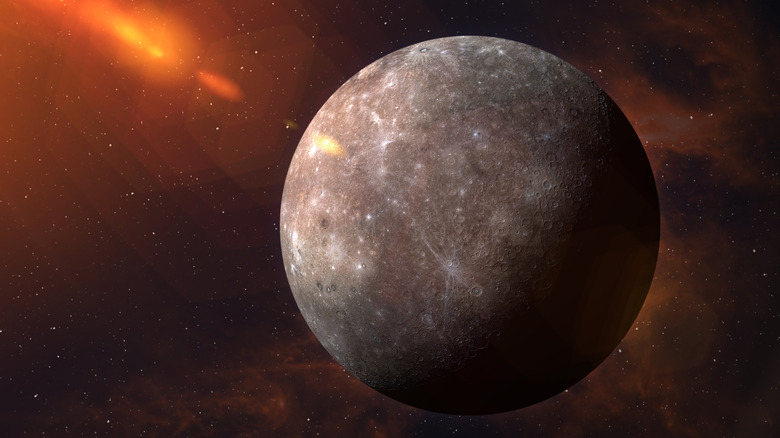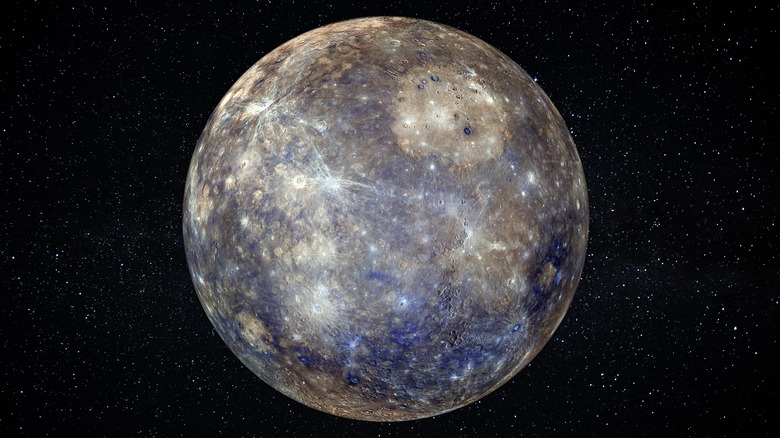The Real Reason Mercury Is Shrinking
The planet Mercury is, by all accounts, a fascinating case study. It is the closest planet to the sun, but it actually isn't the hottest. Universe Today explains that while Mercury reaches a preposterous temperature of 799 degrees Fahrenheit (700 Kelvin), its neighbor Venus tops that, boasting a heat of around 864 degrees Fahrenheit (735 Kelvin). The difference is that the latter has a thick atmosphere of carbon dioxide, which retains heat, while Mercury is entirely without atmosphere.
Naturally, having the sun on your doorstep — relatively speaking; per Space, Mercury only comes within 29 million miles of it — makes for some outrageous temperatures, and it surely affects the very makeup of the planet, too. In that sense, you would think it would be difficult to find any particular similarities between Mercury and our beloved home, the Earth. However, a NASA study reported in 2019 that Mercury seems to have a solid inner core, much like that of Earth, and that it's around the same size as well. They're practically twins! Minus the whole 700 Kelvin thing.
Another curious connection between the two planets is that Mercury appears to be tectonically active, per NASA. This being the case, it means that Earth isn't the only planet to be so. It would also explain why Mercury is shrinking.
A small planet, getting smaller
NASA reports that the spacecraft dubbed MErcury Surface, Space ENvironment, GEochemistry, and Ranging (making for the brilliant acronym of MESSENGER) began a mission to survey the planet in August 2004. On finally arriving in orbit in March 2011, it spent the next few years gathering some fascinating information about the distant planet. In the process, it detected scarps that were smaller than any that had been noted on Mercury before. Fault scarps, per ThoughtCo, are indicators of activity beneath the surface and can contribute to the creation of whole mountain ranges. According to NASA, these smaller scarps are more recent, and that's the key thing.
The larger scarps (which were reportedly detected decades ago), alongside the smaller ones, demonstrate that Mercury's core is losing heat, and so the planet is steadily contracting. According to Space, the molten iron that makes up its interior is solidifying, causing the planet's loss in size.
Fascinatingly, the crust of Mercury consists of just one plate, per Space. The contracting core forced parts of this plate upward, causing the scarps that MESSENGER was finally able to give scientists a good look at. Armed with this evidence, NASA suggests that "Mercury-quakes" might be a reality.

